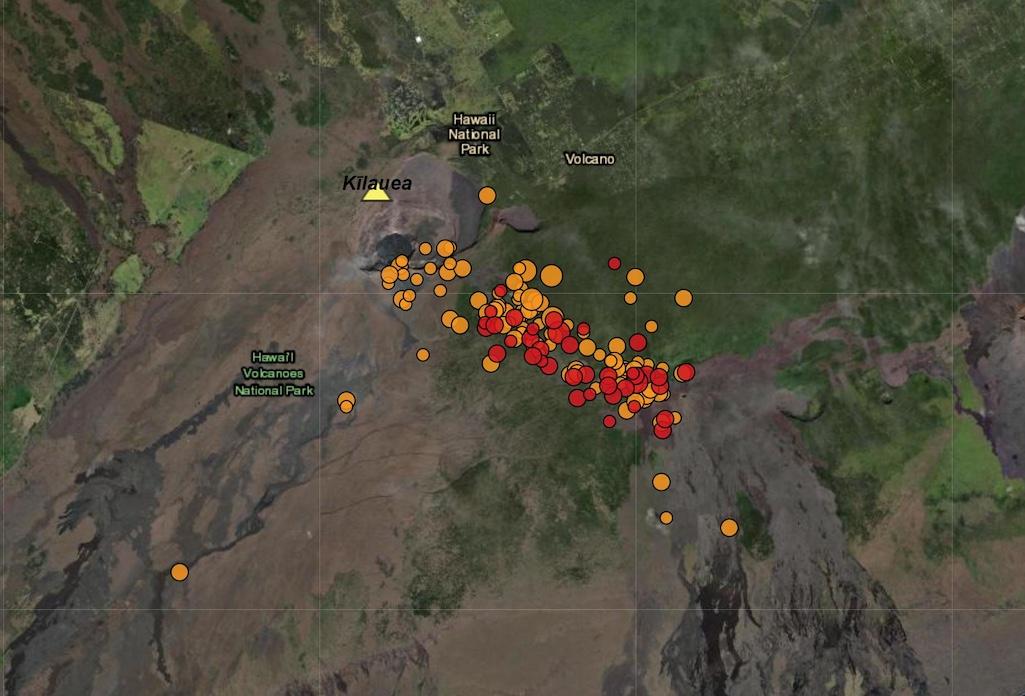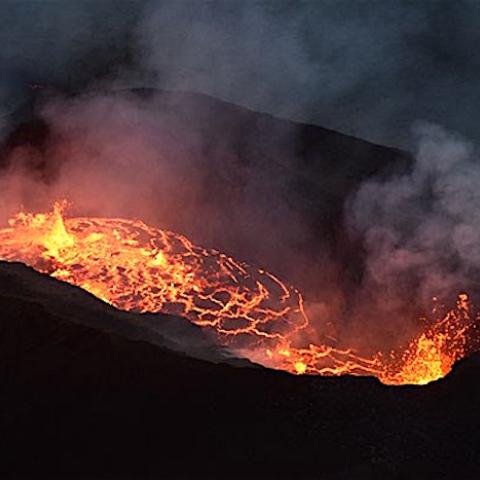
Recent earthquake activity at Hawai'i Volcanoes National Park/NPS
Increased seismic activity below Kīlauea volcano at Hawai'i Volcanoes National Park has prompted closure of the Chain of Craters Road and some other areas of the park.
According to the Hawaii Volcano Observatory, increased rates of seismicity and ground deformation began at approximately 11 a.m. HST on Monday.
"Over the past eight hours, there have been approximately 150 earthquakes beneath Kīlauea’s upper East Rift Zone region, extending from Keanakākoʻi Crater southeast to Maunaulu," the observatory reported Monday night. "Activity peaked between noon and 2 p.m. HST, and earthquakes have been occurring at decreasing rates since then. Most earthquakes have been smaller than magnitude-2, though there were six events larger than magnitude-3. The largest earthquake was a magnitude-3.5 at 12:08 p.m. HST. Events have remained at depths of 1–3 km (0.6–1.8 miles) beneath the surface. Most earthquakes have been too small to feel, but several were reported felt in Hawaiʻi Volcanoes National Park and surrounding communities.
"Earthquake activity has been accompanied by elevated rates and changing patterns of ground deformation in Kīlauea’s upper East Rift Zone," the agency continued. "However, tiltmeters in Kīlauea summit region (instruments SDH, southwest of the summit, and UWE, northwest of the summit) do not show significant changes associated with this activity."
In response to the increased activity, the national park staff closed areas that could put visitors and staff at risk if the volcano erupts.
The temporary closures include:
- Chain of Craters Road from the intersection at Devastation parking lot to the coast.
- Kulanaokuaiki Campground is closed.
- Crater Rim Trail south of Nāhuku lava tube is closed.
- Coastal backcountry areas and Nāpau sites are closed. All new backcountry permits for those areas are canceled.
- Escape Road is closed from Nāhuku to Maunaulu.
“It is never an easy decision to close areas, but it is the right thing to do. Safety is always our top priority,” said Superintendent Rhonda Loh. “We remain in constant communication with scientists at the USGS Hawaiian Volcano Observatory and will continue to notify the public of any changes.”
Risks include the uncertainty of where an eruption could break out, the potential for elevated volcanic gases, dangerous lava flows, damaging earthquakes and lava-ignited wildfire.
Many popular areas in the park remain open, including Kīlauea Visitor Center, overlooks along Crater Rim Trail, Volcano House, and Nāhuku. However, it is a very busy time of year and the visitor center parking lot typically fills by mid-morning.




 Support Essential Coverage of Essential Places
Support Essential Coverage of Essential Places







Add comment